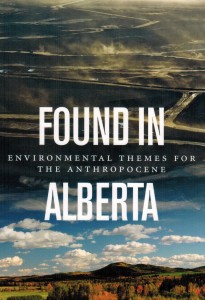Each time there is an E.coli outbreak – it is now a triannual event – the beef industry and its apologists explain food poisoning wouldn’t be a problem if only consumers knew how to cook tainted hamburger. It’s the same logic Big Auto used once against mandatory seatbelt laws.
“We are all part of the problem,” Laura Rance, editor of the farm periodical Manitoba Co-operator, wrote in a snide 2012 commentary; “How is it that in Canada, one of the world’s wealthiest and most well-educated countries, we have a population so functionally illiterate when it comes to safe food preparation? Even meat carrying E.coli is edible when properly cooked.”
So it was that General Motors’ director of styling, William Mitchell, told a reporter in 1956: “The seat belt craze isn’t doing anything for the brains of the guy driving the car. Sure, we need thinner pillars and better vision, but this just encourages the nuts. Put belts and shoulder harnesses on them and they think they can do anything.”
So, Big Auto sold inherently unsafe cars that killed and maimed through normal operation. And Big Beef sells meat that can kill or maim through normal consumption. Robert Boschman, co-editor of Found In Alberta, challenges the logic.
Found In Alberta is an eloquent series of essays on environmental themes in the province that celebrates natural wonders in tourism advertising, then licenses oilsands development and the biggest concentration of feedlots in the country. Boschman, a professor of English at Calgary’s Mount Royal University, notes Alberta cattlemen like to show photos of the Rockies in their marketing: it evokes “a relationship between natural landscape and the domesticated cattle,” he writes.
In 1999, Boschman’s three-year old daughter was poisoned after eating E.-coli-tainted sausage. The bacteria infected an older sibling, age 5, when the two sisters shared a bath. “At first, and for a long time afterward, I was devastated that my own complicity in beef consumption and my unthinking act of bathing the girls together when one of them suffered food poisoning should have such grievous consequences.”
Both girls were hospitalized. The five-year old emptied her bowels 54 times, “her body’s attempt to rid itself of a pathogen so toxic the intestinal wall was being rejected,” Boschman writes: “Until that moment, the reality of urban humans living in a single, interconnected biosphere had not entered my personal experience and consciousness with such force.”
E.coli is spread by filth. Cattle trucks force livestock to stand in their own excrement that coats their hides. Once delivered to the slaughterhouse, they are processed at a rate of up to 500 cattle per hour. The system has had spectacular failures.
In the XL Foods Inc. scandal, a case of mass food poisoning that prompted the diatribe from the Manitoba Co-operator, E.coli spread from cattle dirt to mechanical blades to raw meat later shipped and sold to consumers. The bacteria were first detected on August 29, 2012. Federal inspectors allowed the plant to keep shipping tainted meat for another thirty-one days. Incredibly, no one was fired – least of all Agriculture Minister Gerry Ritz, then responsible for meat inspection. Instead cabinet quietly assigned inspection duties to the Minister of Health, and the Co-operator concluded food poisoning wouldn’t be an issue if only consumers weren’t so stupid.
Found In Alberta questions these practices with a poignant observation: stewardship of the land and profit-taking from the land are not the same thing: “Where better to examine apparent contradiction between the deeply-held love and pride of wilderness, and the relentless pursuit of the riches it yields?”
By Holly Doan
Found in Alberta: Environmental Themes for the Anthropocene, edited by Robert Boschman and Mario Trono; by Wilfrid Laurier University Press; 398 pages; ISBN 9781-5545-89593; $32.24






